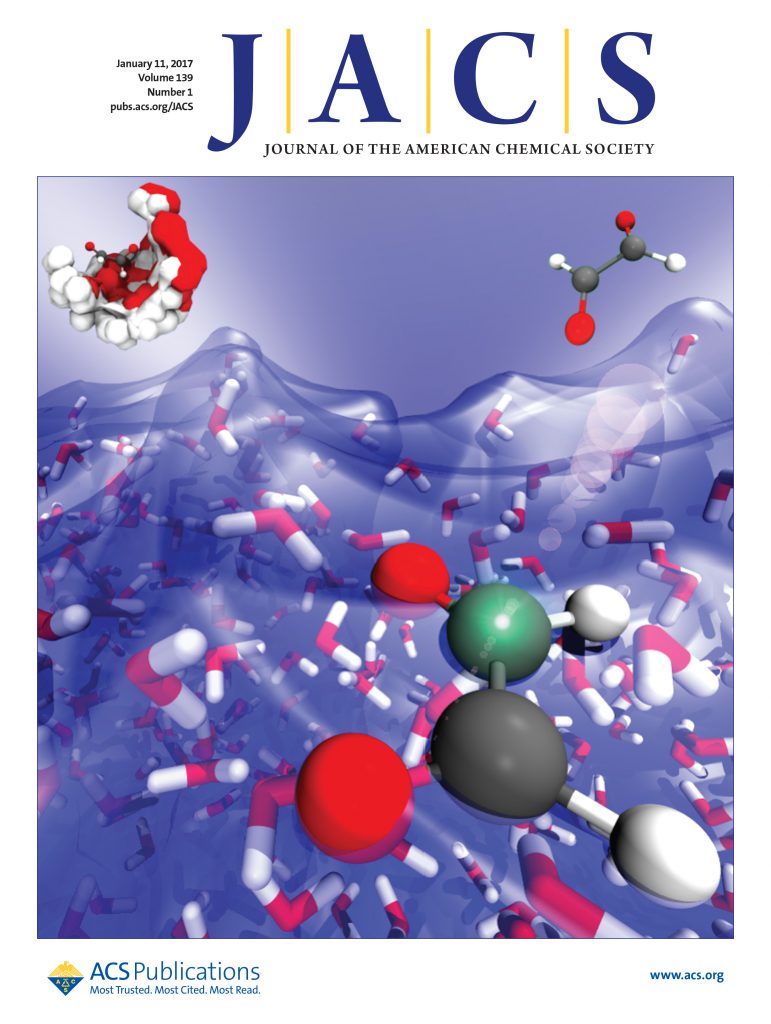热晶到晶转变解锁Ti8O10(OOC)12簇基金属有机框架。
IF 15.6
1区 化学
Q1 CHEMISTRY, MULTIDISCIPLINARY
引用次数: 0
摘要
钛基金属有机骨架(Ti-MOFs)是一种很有前途的光催化剂,但其发展受到溶剂热条件下成功纳入mfs的Ti-oxo簇的多样性的限制。在此,我们展示了一种热固态合成策略,通过MIL-125及其功能化衍生物的晶体到晶体转变,获得具有Ti8O10(OOC)12簇的新型ti - mof (MIL-125- ht系列)。MIL-125的受控热处理诱导了原始Ti8O8(OH)4(OOC)12簇的脱水和重排,同时保持了结晶度和框架拓扑结构。通过三维电子衍射和同步加速器粉末x射线衍射测定了MIL-125-HT的原子分辨结构。MIL-125-HT的相变温度和结晶度由连接体上的官能团决定,这既影响了簇重排所需的旋转灵活性,也影响了避免框架坍塌所需的热稳定性。萘基连接剂提供了灵活性和坚固性的最佳组合,产生高结晶的高温相。与MIL-125相比,MIL-125- ht在过氧化氢生产中表现出更小的带隙和更强的光催化活性。这项工作为揭示以前无法获得的ti - mof建立了一种固态方法,拓宽了它们的合成领域,并为光催化提供了新的机会。本文章由计算机程序翻译,如有差异,请以英文原文为准。
Thermal Crystal-to-Crystal Transformation Unlocks Ti8O10(OOC)12-Cluster-Based Metal-Organic Frameworks.
Titanium-based metal-organic frameworks (Ti-MOFs) are promising photocatalysts, yet their development has been constrained by the limited diversity of Ti-oxo clusters successfully incorporated into MOFs under solvothermal conditions. Herein, we demonstrate a thermal solid-state synthetic strategy to access new Ti-MOFs (MIL-125-HT series) featuring Ti8O10(OOC)12 clusters via the crystal-to-crystal transformation of MIL-125 and its functionalized derivatives. Controlled thermal treatment of MIL-125 induces dehydration and rearrangement of the original Ti8O8(OH)4(OOC)12 clusters while preserving crystallinity and the framework topology. The atomic-resolution structure of MIL-125-HT was determined through three-dimensional electron diffraction and synchrotron powder X-ray diffraction. The phase transition temperature and crystallinity of the resulting MIL-125-HT are governed by the functional groups on the linkers, which affect both the rotational flexibility required for cluster rearrangement and the thermal stability necessary to avoid framework collapse. Naphthalene-based linkers provide an optimal combination of flexibility and robustness, yielding highly crystalline high-temperature phases. Compared to MIL-125, MIL-125-HT exhibits a reduced band gap and enhanced photocatalytic activity in hydrogen peroxide production. This work establishes a solid-state approach for uncovering previously inaccessible Ti-MOFs, broadening their synthetic landscape and enabling new opportunities in photocatalysis.
求助全文
通过发布文献求助,成功后即可免费获取论文全文。
去求助
来源期刊
CiteScore
24.40
自引率
6.00%
发文量
2398
审稿时长
1.6 months
期刊介绍:
The flagship journal of the American Chemical Society, known as the Journal of the American Chemical Society (JACS), has been a prestigious publication since its establishment in 1879. It holds a preeminent position in the field of chemistry and related interdisciplinary sciences. JACS is committed to disseminating cutting-edge research papers, covering a wide range of topics, and encompasses approximately 19,000 pages of Articles, Communications, and Perspectives annually. With a weekly publication frequency, JACS plays a vital role in advancing the field of chemistry by providing essential research.

 求助内容:
求助内容: 应助结果提醒方式:
应助结果提醒方式:


